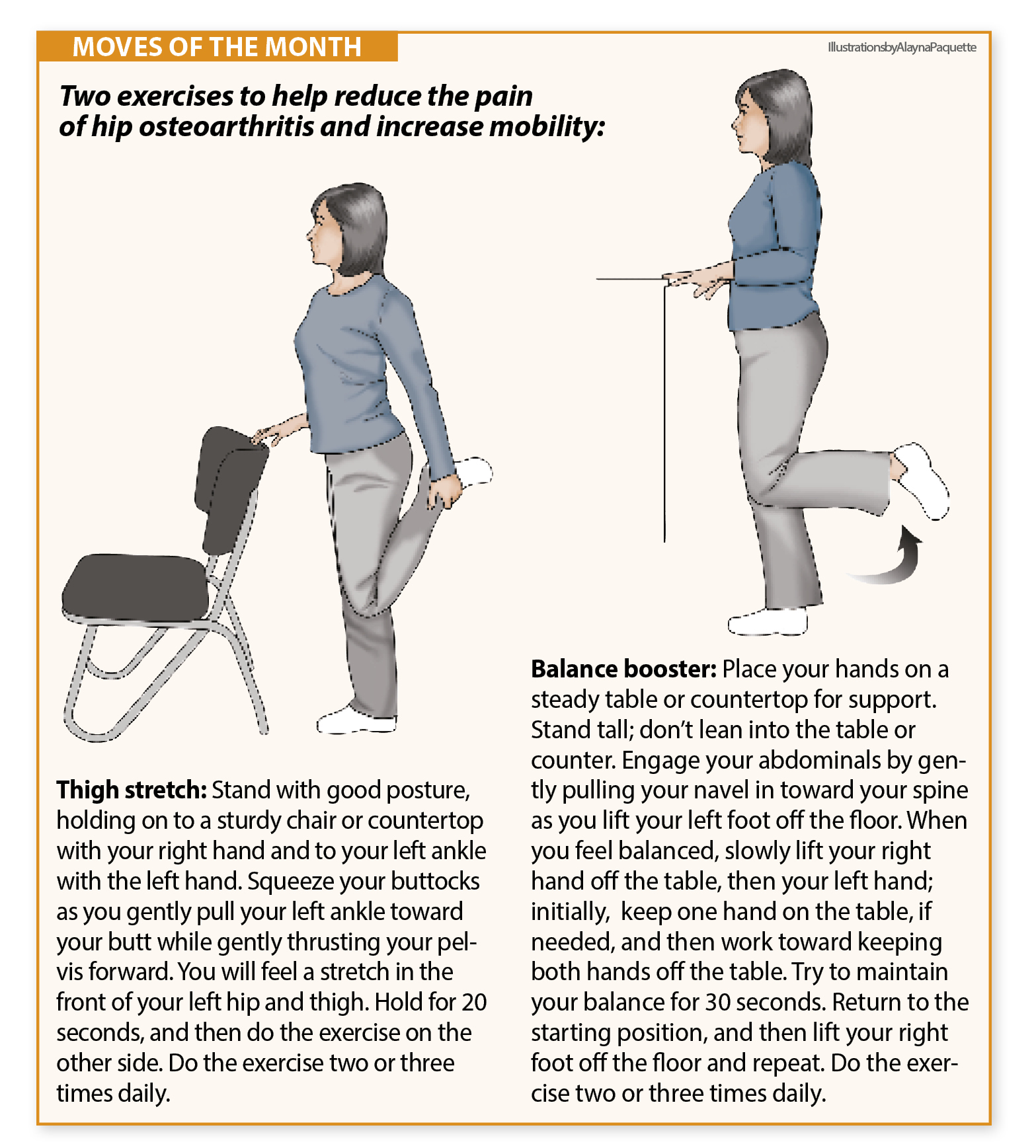Hip Osteoarthritis: Exercise to Reduce Pain, Improve Function
People with mild-to-moderate hip osteoarthritis may be able to avoid hip surgery if they exercise regularly, according to a recent study published in the Annals of the Rheumatic Diseases in November 2013. Study participants who completed the 12-week program of at least two exercise sessions weekly were 44 percent less likely to need hip replacement within the six-year followup period. Those who exercised also reported better hip function.
“The study results are in keeping with what we see in the clinic,” says Robert Turner, PT, OCS, a board-certified orthopedic clinical specialist and advanced clinician in the Sports Rehabilitation and Performance Center at the Weill-Cornell affiliated Hospital for Special Surgery. “Our patients with hip osteoarthritis who don’t wait until symptoms are severe have an opportunity to improve pain and function with a targeted exercise program under the guidance of a physical therapist.”
Recognize symptoms early
Hip osteoarthritis tends to develop gradually, starting with pain on the side or front of one or both hips. “In the early stage, people may be diagnosed with trochanteric bursitis (inflammation of the fluid-filled sac located at the top, outside point of the hip, known as the ‘greater trochanter’), and receive a cortisone shot for the pain. But that only addresses the symptom; it doesn’t stop the degeneration,” Turner explains. “Over time, they may have difficulty with internal rotation of the hip, and they start to notice a limp. At the same time, the upper body tips over the painful hip and their toes start pointing out to the side more when they’re walking. Then they lose the ability to balance, which can further impair how they walk, putting them at risk for falls.”
Telltale signs of hip osteoarthritis include hip pain at night; pain radiating down the front of the thigh; and an inability to sit comfortably more than an hour or so before stiffness and pain set in. However, such symptoms also can be signs of lower back and spine problems, Turner warns, “which is why it’s important to get a thorough evaluation by a doctor and physical therapist to determine the origin of the problem.”
Take action
Stretching the muscles around and in front of the hip and thigh can increase flexibility and reduce pain, and strengthening the hip abductors and gluteal muscles can improve balance and lessen fall risk (see Moves of the Month, below).
If you have to sit for long periods, get up and move around at least once an hour to reduce hip stiffness, Turner advises. Regular walking or bike riding can be done in conjunction with any targeted program developed by your health professional. “Steer clear of a recumbent bike, which can irritate the hips. Choose an upright bike with a relatively high seat so you have to stretch your leg out and down toward the pedal. This will help keep your hip flexors open,” he says.
“Too often, people adapt strategies such as taking pain relievers instead of getting an evaluation. Then, by the time we see them, a substantial amount of degeneration may have occurred,” Turner says. “If you take action sooner, you may be able to halt or delay degeneration, pain, and loss of function.”
The post Hip Osteoarthritis: Exercise to Reduce Pain, Improve Function appeared first on University Health News.
Read Original Article: Hip Osteoarthritis: Exercise to Reduce Pain, Improve Function »
Powered by WPeMatico



